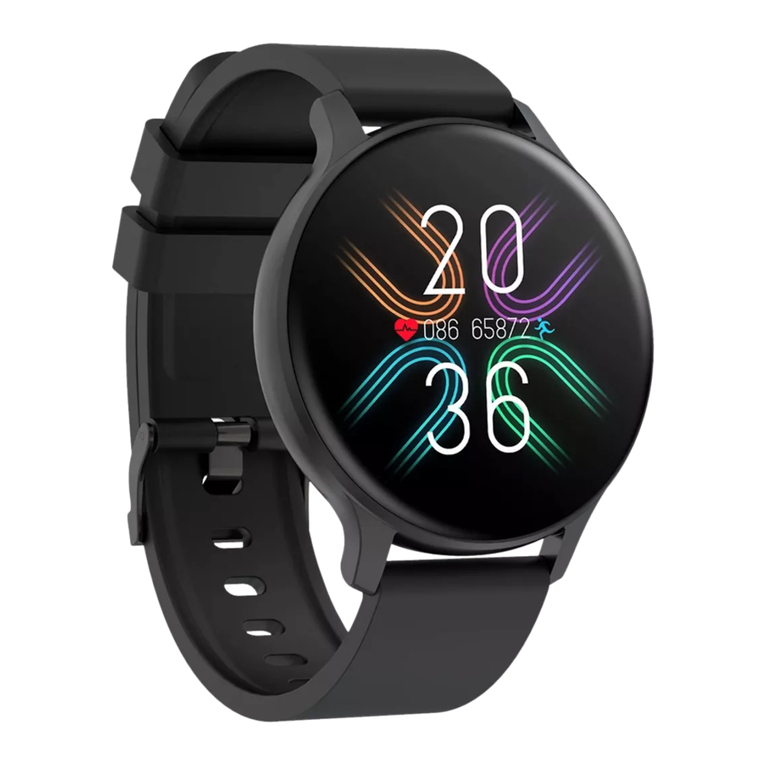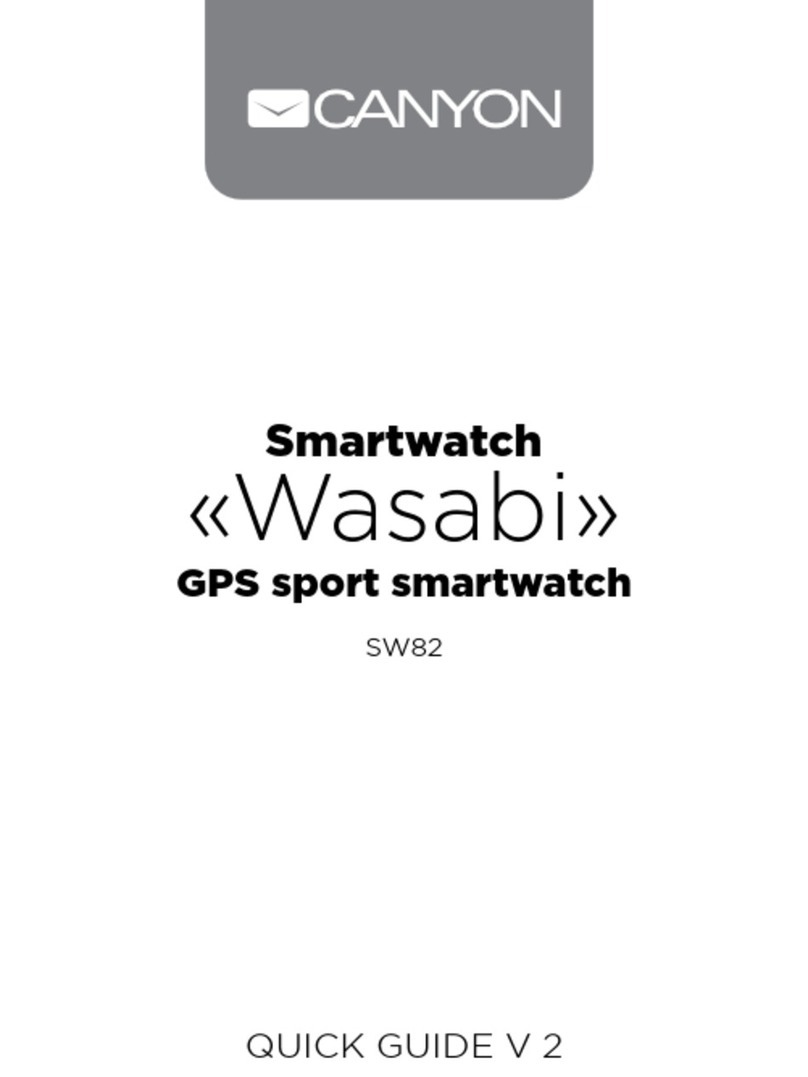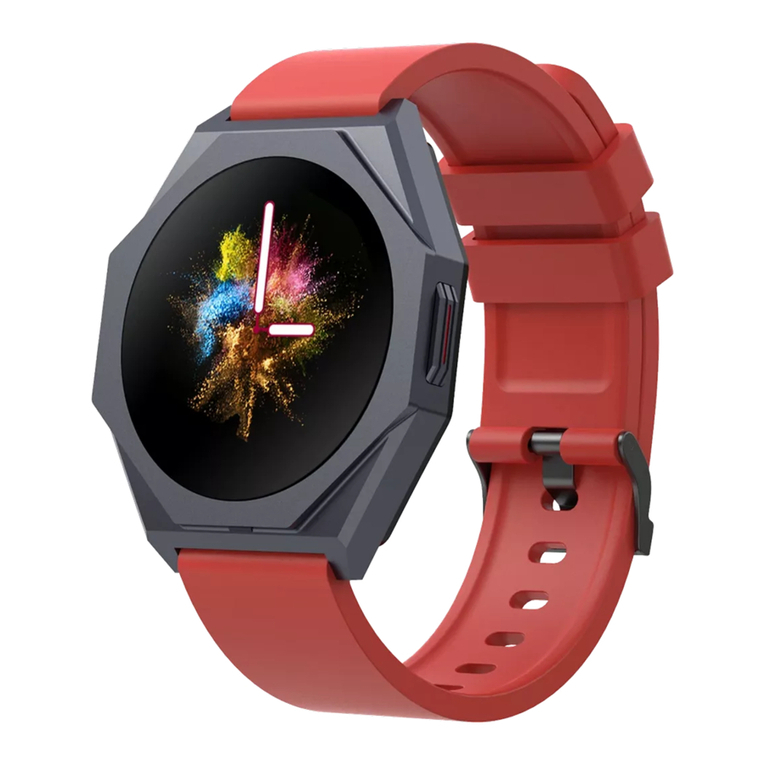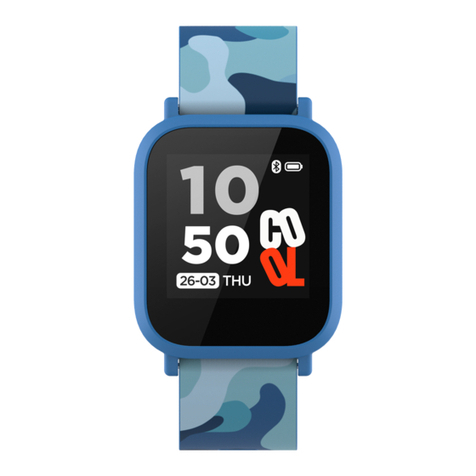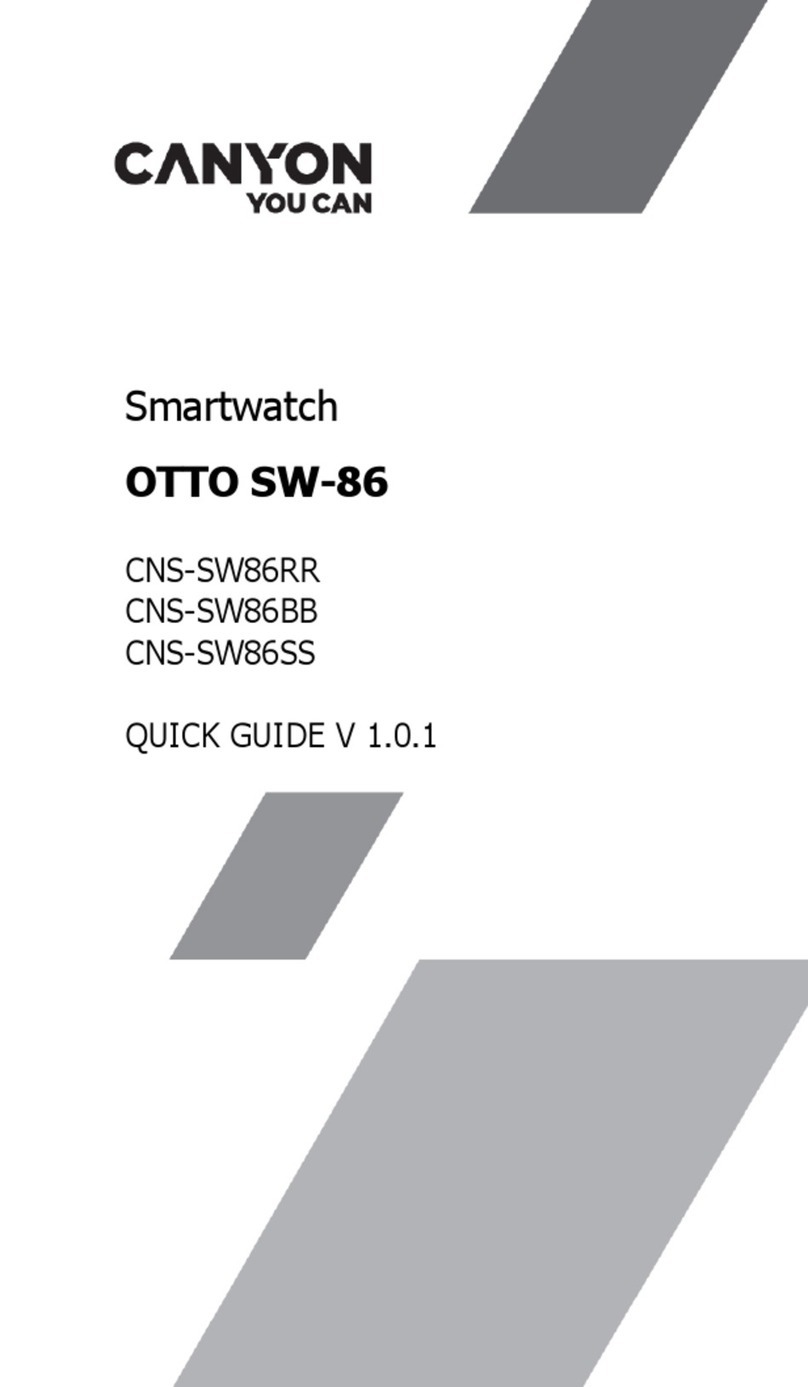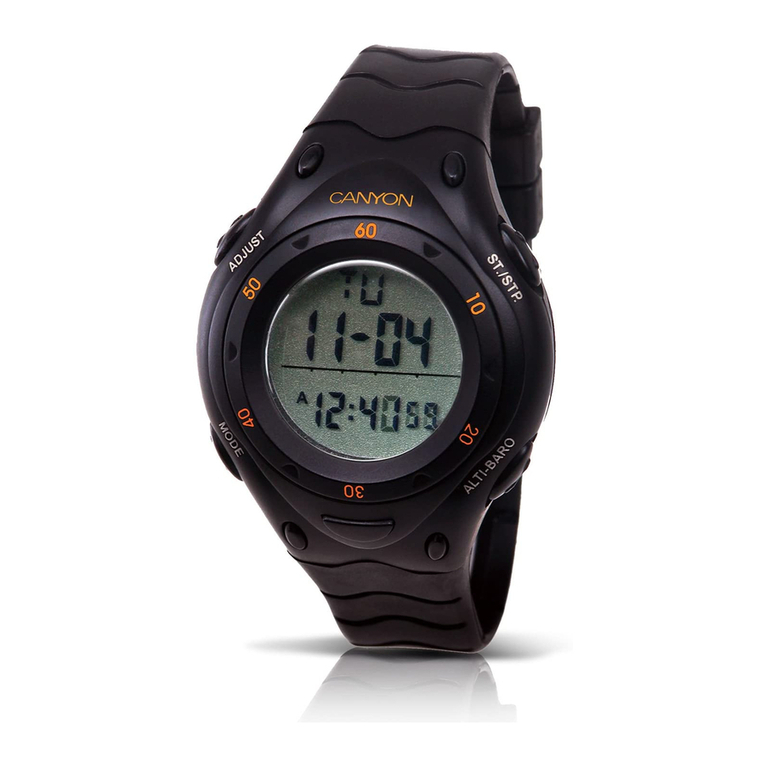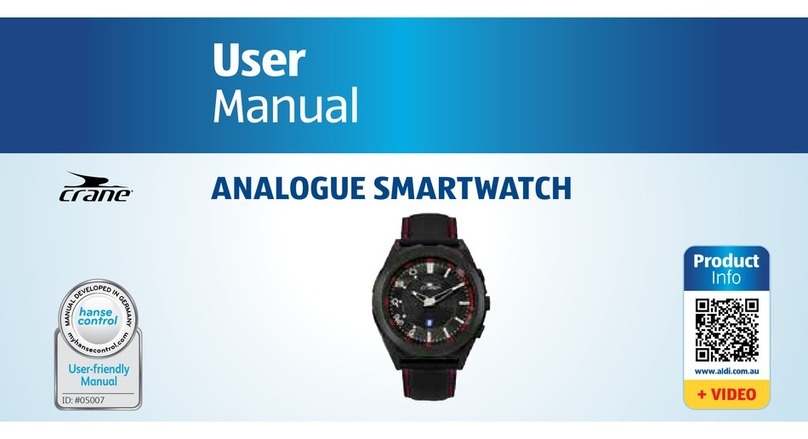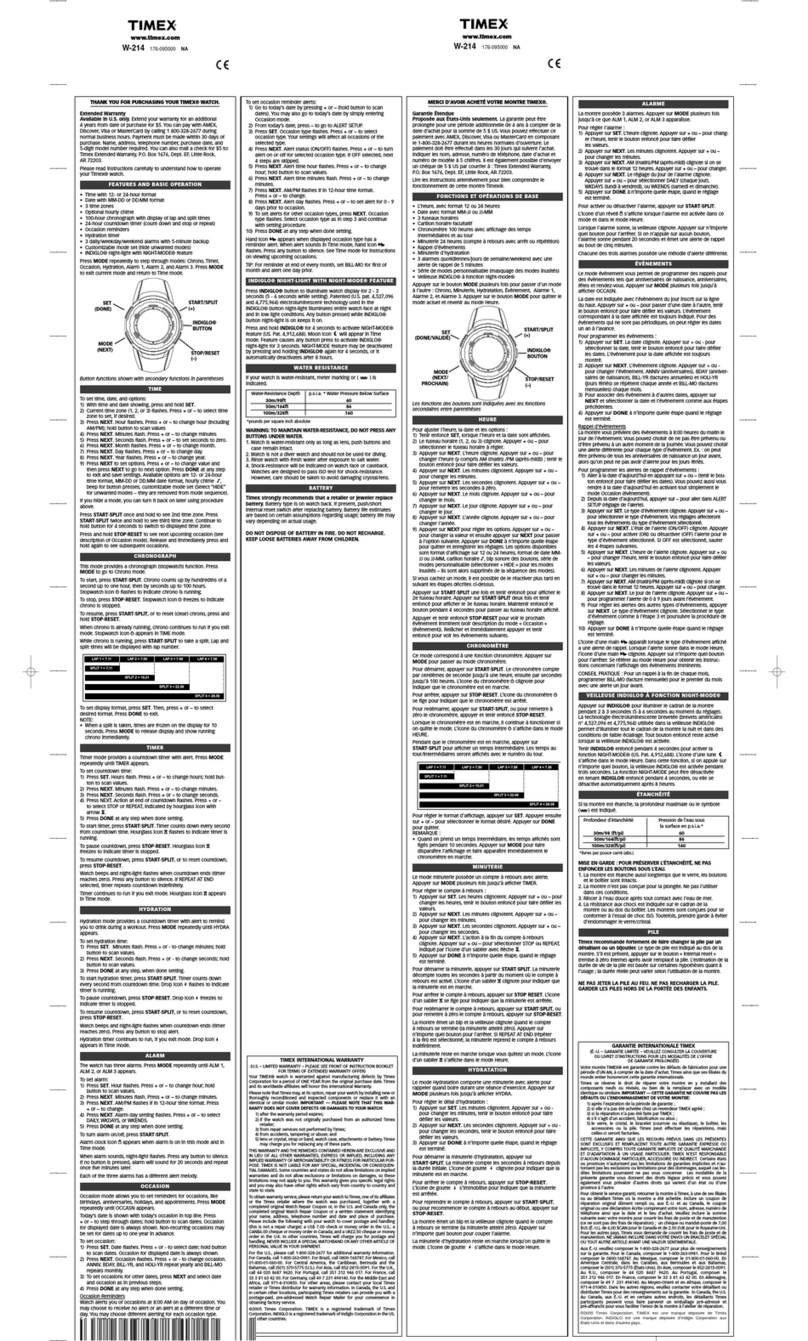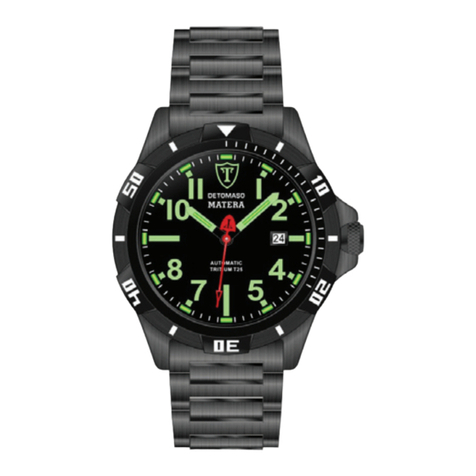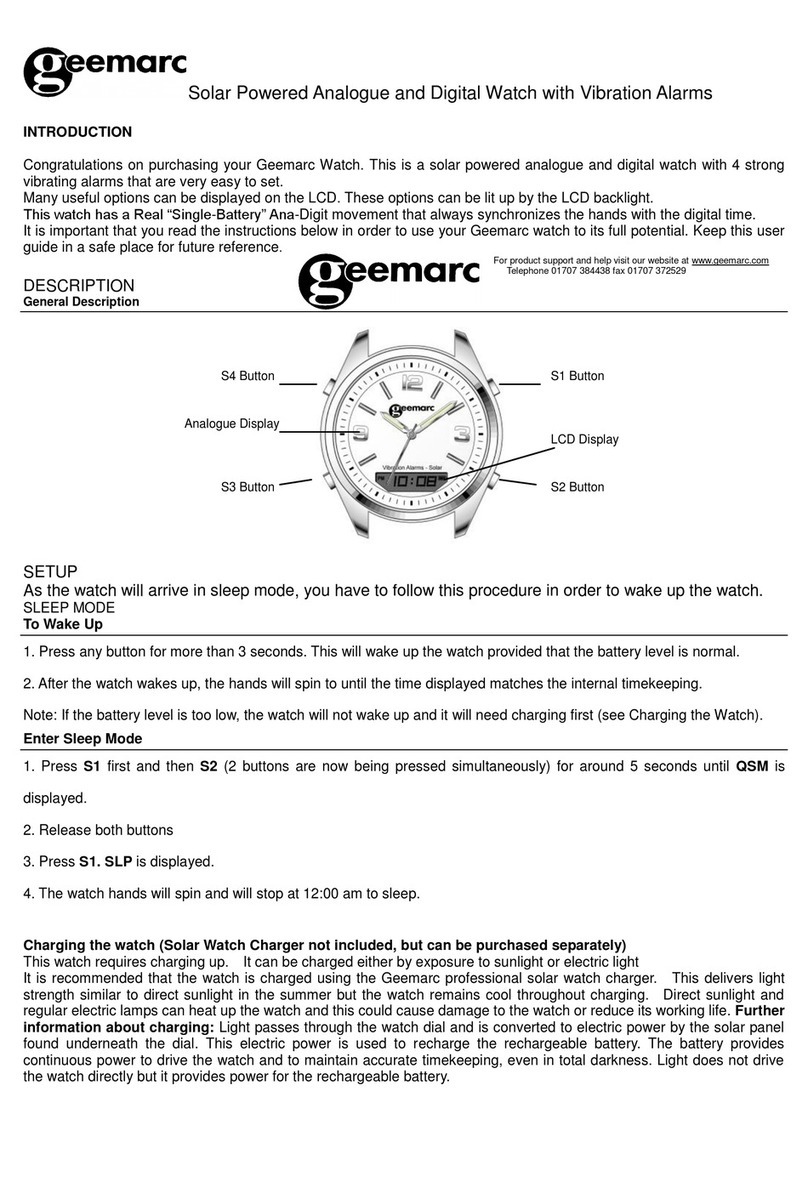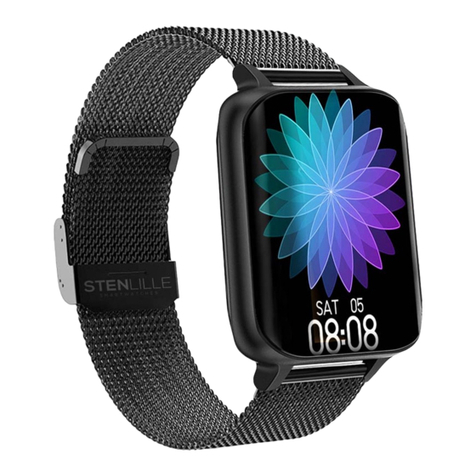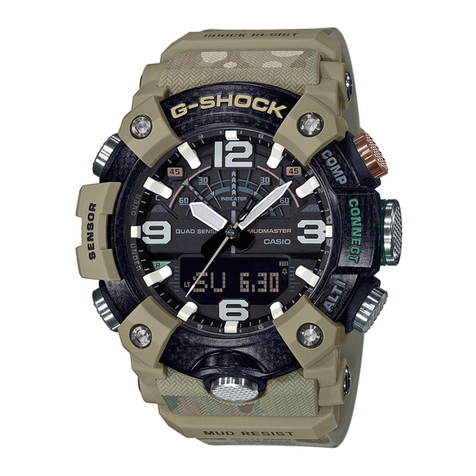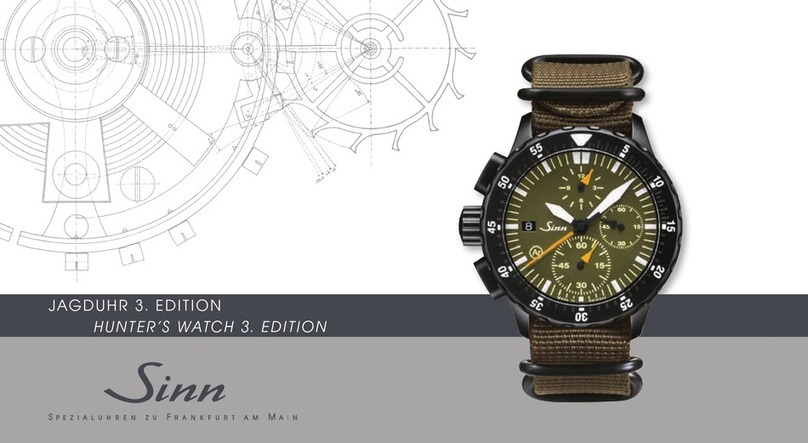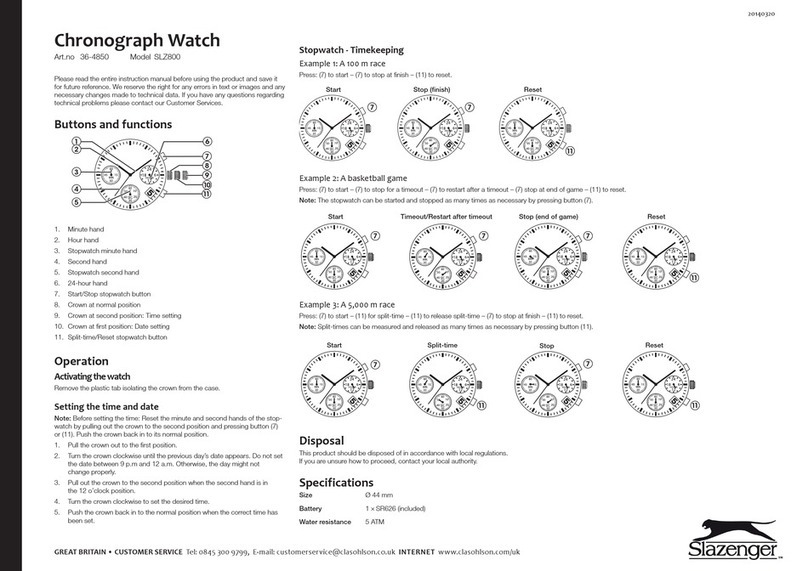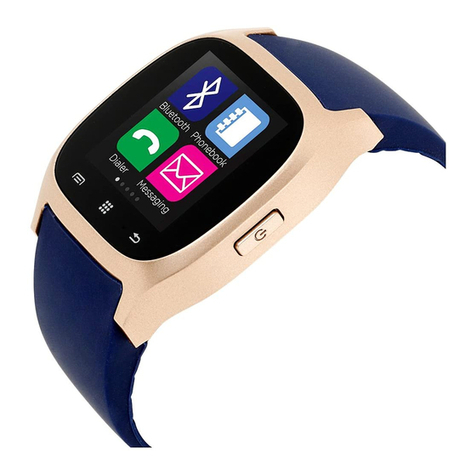zFailure to do a correct calibration can result in
inaccurate headings. Perform a new calibration
again if a heading is suspected.
Calibration Mode After the ring move, turn the
unit clockwise for two circles
Enter Declination angle for the true North
zDeclination refers to the measured difference between the
magnetic North and the North of the map. The local
declination is given on the map margin either as easterly
plus declination (E) or as westerly minus declination (W).
When orienteering, the map direction is corrected by
subtracting the plus declination and adding the minus
declination.
zTo input the value, press and hold button A to enter
calibration mode “CAL” first and press button A again to
confirm to enter declination setting mode “dEC”.
zRight after entering the declination setting mode, a letter “E”
starts to flicker. Press button C to select the direction East- E
or West- W and then press button A to confirm.
zAn angle digit will then start to flicker. To set the angle to be
offset, press button C to adjust to the desired value and then
press button A to confirm.
zAs the declination setting will affect the direction directly, for
a serious and final confirmation, press button C to turn the
function “on” and then press button Aagain to confirm.
zIn order to understand the declination effect, let us quote an
example, the current direction is N 10 degree, If the
declination angle is set to E 30 degree, the final will change
to NE 40 degree or If the declination angle is set to W 30
degree, the final direction will change to NW 340 degree.
Important notes
Compass
zThe compass must not be used near a metal or magnetic
object like any other compass.
zWhenever error message “Err” is continuously
displayed, please calibrate the compass again.
zPlease hold the compass as horizontal as possible to
get a precise direction.
Temperature
zThe temperature displayed is the temperature of the
case inside. Hence, it is influenced by your body
temperature.
zTo display the actual temperature, the watch must be
taken off the hand for about 15 to 30 minutes and must
not be exposed to direct sunlight.
Altimeter
zUnfortunately all altimeter are going to be affected by
barometric pressure (unless they are GPS controlled
or similar) as this is what they use to calculate their
height. To offset this barometric effect on altimeter,
Please keep a check and re-adjust the altimeter when
you are at known heights or re-setting your watch to
zero at sea-level.
And the declination angles for major world cites are listed as
follows:
City Declination Angle City Declination Angle
Anchorage Calgary
Atlanta Chicago
Bombay Denver
Boston Jerusalem
London Rio De Janeiro
LittleRock San Francisco
Livingston, MT Seattle
Munich Shanghai
NewYorkCity Toronto
Orlando Vancouver
Oslo WashingtonDC
Paris Waterbury,CT
Malfunction Problem
Incorrect Compass Wrong Calibration or the environment of
Reading operation is changed.
Do the Calibration again with correct
instruction stated in the user manual.
“Err” display in Compass External Magnetic Interference, such as
Mode heavy metal, home appliance, computer
andhighpowercable,etc...
Escapefromtheinterferenceordothe
re-calibration again.
Incorrect Temperature Interference from direct sunlight, air
Reading conditioner or Heater vent.
Movetheunitawayfromtheinterference.
Display readout fades and Poor battery or bad contacts.
Incorrect readings Take out battery and install again or
Installanewbattery.
Black Display Temperature too hot, or display exposed
todirectsunlighttoolong.
Display shows irregular Take out battery and install again.
figures



